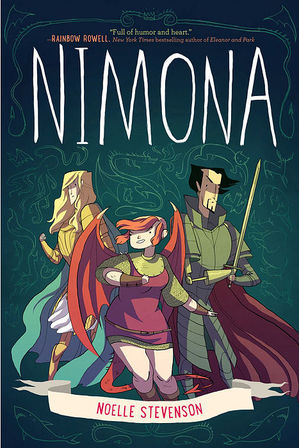 Written by Lauryn Smith The first and last graphic novel I read was for a contemporary fiction class in college. From that experience, I learned that there are some things that pictures, or a combination of pictures and text, can better accomplish than text alone. I used to think that graphic novels were only for young readers, but I have since changed my mind—graphic novels can actually be full of meaning. So when Reviewer Beth Winters suggested I read “Nimona” by Noelle Stevenson, I agreed. I was not disappointed. "Nimona,” which falls in the young adult genre, is a full-color graphic novel based on Stevenson’s web comic of the same name. In this work of fiction, there are heroes and villains and dragons and science and contemporary ideology. Essentially, Stevenson’s story consists of classic premises sprinkled with modernity. The eponymous character, young in relation to the book’s other characters, one day shows up at the home of bad guy Lord Ballister Blackheart asking to be his sidekick. Reluctantly, Blackheart agrees. He and Nimona, who turns out to be a skilled shapeshifter, make and execute "villainous" plans, one of which leads them to discover that the powerful Institution of Law Enforcement is up to no good. Complicating matters is the fact that Blackheart’s once good friend Sir Ambrosius Goldenloin works for the Institution. Naturally, chaos ensues.
0 Comments
|

Enjoying my book reviews? If you’ve found them helpful or simply love diving into a good book, consider supporting my caffeine-fueled reading sessions! Your contribution helps keep the reviews coming and ensures I stay wide awake for those late-night reading marathons. Cheers to a shared love for literature! ☕️
Categories
All
|
